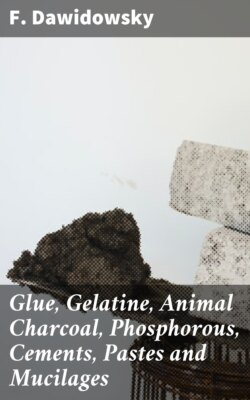Читать книгу Glue, Gelatine, Animal Charcoal, Phosphorous, Cements, Pastes and Mucilages - F. Dawidowsky - Страница 14
4. RAW MATERIALS FOR FISH GLUE.
ОглавлениеThe air-bladders or sounds of various fishes contain much glue-yielding substance and on account of its purity, the product known as isinglass obtained from them is preferably used for culinary and medicinal purposes. The high price of the raw material excludes it from being used by the glue-boiler, but as he manufactures substitutes for isinglass, and should therefore have a thorough knowledge of the article with which he has to compete, its manufacture will be included in this treatise. Since, however, the work of the manufacturer is finished with the preparation of the raw material, i.e., of the air-bladders into crude glue, isinglass and its substitutes will be referred to later on.
There is a material difference between isinglass and glue manufactured from entire fishes. The raw material is, of course, limited to certain localities. The principal point to be observed in the manufacture of fish-glue is the removal of the skin, which is effected by means of dilute sulphuric acid.
After removal of the last traces of acid, the fatty matter of the fishes is saponified by a treatment with milk of lime frequently renewed. After washing out the lime, the pulpy mass is placed in a solution of sodium hyposulphite, alum, and common salt, where it remains for a few days. The liquor is then drawn off and replaced by a mixture of solution of alum, dilute sulphuric acid and nitric acid. After macerating in this mixture for a few days, the mass is thoroughly washed and boiled to glue, and the resulting product clarified with sulphurous acid or alum solution. As will be seen, the entire process is tedious, requires many chemicals, and besides the yield of glue, which has no specially good qualities, is small. It is used as a substitute for isinglass for clarifying liquids. The best proof that the business is of but little importance is found in the fact that no fish-glue has been exhibited at any of the late international exhibitions.
The scales of large fishes, such as carp, give more favorable results. They are treated with hydrochloric acid in a similar manner to bones. The scales do not dissolve entirely, a horny insoluble mass, giving no glue, remaining behind after the solution of the glue-yielding substance.
